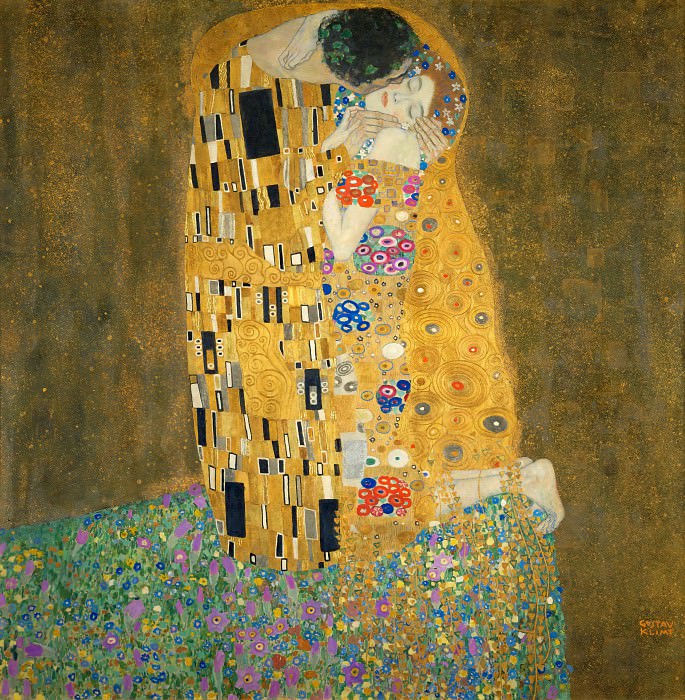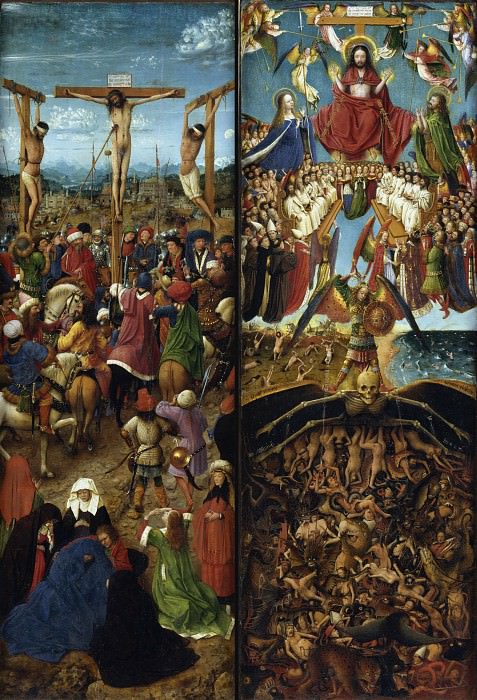Exploring the Art of Stanley Spencer: A Visionary in British Painting
Stanley Spencer, one of the most distinctive British painters of the 20th century, created a body of work that is both deeply personal and universally resonant. Born in 1891 in the small village of Cookham, Berkshire, Spencer's art is inextricably linked to his upbringing and his profound connection to his hometown. This relationship with Cookham, often referred to by Spencer as his "heaven on earth," serves as the backdrop for much of his work, where he reimagines biblical scenes and daily life in a uniquely intimate and mystical manner.
Early Life and Influences
Spencer's early life in Cookham played a critical role in shaping his artistic vision. His upbringing in a religious household, combined with the idyllic English countryside, imbued him with a sense of spirituality and a deep connection to nature. These elements became recurring themes in his art, where he frequently depicted biblical stories as if they were unfolding in the fields and streets of Cookham. His education at the Slade School of Fine Art in London further honed his skills, placing him among the most promising artists of his generation.
During his time at the Slade, Spencer was influenced by the works of early Renaissance painters such as Giotto and Masaccio. Their emphasis on narrative clarity, combined with the symbolic depth of their work, resonated with Spencer. He sought to blend these classical influences with his own personal experiences and visions, resulting in a style that is both traditional and radically innovative.
The Visionary Themes of Spencer's Art
At the heart of Stanley Spencer's work lies a fusion of the sacred and the mundane. His paintings are often populated by biblical figures, yet they are set in the familiar surroundings of Cookham. This juxtaposition creates a sense of timelessness, as if the divine is always present in everyday life. Spencer's ability to make the ordinary extraordinary is one of his most significant contributions to British art.
One of the most remarkable aspects of Spencer's art is his exploration of human relationships, particularly the themes of love, sexuality, and spirituality. His series of paintings known as the "Marriage at Cana" and "Resurrection" cycles are prime examples of this. In these works, Spencer reinterprets traditional religious narratives, infusing them with his own personal experiences and emotional intensity. His portrayal of these scenes is often infused with a sense of reverence and wonder, yet they also reflect his complex views on the nature of human existence.
The War Years and the Impact on His Art
The two World Wars had a profound impact on Spencer's life and work. During the First World War, he served as a medical orderly and later as an infantryman. The experiences he endured during the war left an indelible mark on him, leading to the creation of some of his most powerful and haunting works. The "Sandham Memorial Chapel" murals, which Spencer painted to commemorate the lives lost during the war, are perhaps his most famous wartime works. These murals depict scenes of soldiers engaged in daily activities, yet there is an underlying sense of loss and the fragility of life. The combination of detailed realism with symbolic undertones in these works reflects Spencer's attempt to come to terms with the horrors of war.
After the war, Spencer's work continued to evolve, with an increasing focus on the themes of resurrection and redemption. His paintings from this period often depict scenes of rebirth, both literal and metaphorical, as he sought to express his belief in the possibility of renewal even in the face of great suffering.
The Later Years: Personal Struggles and Artistic Triumphs
The later years of Stanley Spencer's life were marked by personal struggles, particularly in his relationships and his health. His marriage to Hilda Carline, which had once been a source of inspiration for his art, ended in divorce, and he faced numerous financial difficulties. Despite these challenges, Spencer continued to produce some of his most compelling work during this time.
One of the most notable works from this period is the "Christ in the Wilderness" series, which Spencer worked on in the 1930s and 1940s. These paintings depict Christ alone in the desert, engaged in moments of contemplation and struggle. The series is a powerful reflection of Spencer's own sense of isolation and his ongoing quest for spiritual understanding. The stark, barren landscapes in these works stand in contrast to the lush, vibrant scenes of Cookham, highlighting the inner turmoil that Spencer was grappling with during these years.
The Legacy of Stanley Spencer
Stanley Spencer's work remains a testament to his unique vision and his ability to blend the sacred with the everyday. His paintings offer a window into his deeply personal world, yet they also resonate with universal themes of love, loss, and redemption. Spencer's ability to infuse his work with a sense of the divine, while remaining rooted in the familiar, has earned him a place among the most important British artists of the 20th century.
Today, Spencer's work is celebrated for its originality and emotional depth. His paintings can be found in major collections around the world, and his legacy continues to inspire new generations of artists. The village of Cookham, which played such a central role in his life and work, remains a place of pilgrimage for those who seek to understand the man behind the art.
In conclusion, Stanley Spencer's art is a reflection of his life, his beliefs, and his deep connection to the world around him. Through his paintings, Spencer invites us to see the sacred in the everyday, to find beauty in the ordinary, and to contemplate the mysteries of existence. His work is a reminder that even in the most mundane moments, there is a potential for transcendence, and it is this vision that continues to captivate and inspire.
Stanley Spencer, one of the most distinctive British painters of the 20th century, created a body of work that is both deeply personal and universally resonant. Born in 1891 in the small village of Cookham, Berkshire, Spencer's art is inextricably linked to his upbringing and his profound connection to his hometown. This relationship with Cookham, often referred to by Spencer as his "heaven on earth," serves as the backdrop for much of his work, where he reimagines biblical scenes and daily life in a uniquely intimate and mystical manner.
Early Life and Influences
Spencer's early life in Cookham played a critical role in shaping his artistic vision. His upbringing in a religious household, combined with the idyllic English countryside, imbued him with a sense of spirituality and a deep connection to nature. These elements became recurring themes in his art, where he frequently depicted biblical stories as if they were unfolding in the fields and streets of Cookham. His education at the Slade School of Fine Art in London further honed his skills, placing him among the most promising artists of his generation.
During his time at the Slade, Spencer was influenced by the works of early Renaissance painters such as Giotto and Masaccio. Their emphasis on narrative clarity, combined with the symbolic depth of their work, resonated with Spencer. He sought to blend these classical influences with his own personal experiences and visions, resulting in a style that is both traditional and radically innovative.
The Visionary Themes of Spencer's Art
At the heart of Stanley Spencer's work lies a fusion of the sacred and the mundane. His paintings are often populated by biblical figures, yet they are set in the familiar surroundings of Cookham. This juxtaposition creates a sense of timelessness, as if the divine is always present in everyday life. Spencer's ability to make the ordinary extraordinary is one of his most significant contributions to British art.
One of the most remarkable aspects of Spencer's art is his exploration of human relationships, particularly the themes of love, sexuality, and spirituality. His series of paintings known as the "Marriage at Cana" and "Resurrection" cycles are prime examples of this. In these works, Spencer reinterprets traditional religious narratives, infusing them with his own personal experiences and emotional intensity. His portrayal of these scenes is often infused with a sense of reverence and wonder, yet they also reflect his complex views on the nature of human existence.
The War Years and the Impact on His Art
The two World Wars had a profound impact on Spencer's life and work. During the First World War, he served as a medical orderly and later as an infantryman. The experiences he endured during the war left an indelible mark on him, leading to the creation of some of his most powerful and haunting works. The "Sandham Memorial Chapel" murals, which Spencer painted to commemorate the lives lost during the war, are perhaps his most famous wartime works. These murals depict scenes of soldiers engaged in daily activities, yet there is an underlying sense of loss and the fragility of life. The combination of detailed realism with symbolic undertones in these works reflects Spencer's attempt to come to terms with the horrors of war.
After the war, Spencer's work continued to evolve, with an increasing focus on the themes of resurrection and redemption. His paintings from this period often depict scenes of rebirth, both literal and metaphorical, as he sought to express his belief in the possibility of renewal even in the face of great suffering.
The Later Years: Personal Struggles and Artistic Triumphs
The later years of Stanley Spencer's life were marked by personal struggles, particularly in his relationships and his health. His marriage to Hilda Carline, which had once been a source of inspiration for his art, ended in divorce, and he faced numerous financial difficulties. Despite these challenges, Spencer continued to produce some of his most compelling work during this time.
One of the most notable works from this period is the "Christ in the Wilderness" series, which Spencer worked on in the 1930s and 1940s. These paintings depict Christ alone in the desert, engaged in moments of contemplation and struggle. The series is a powerful reflection of Spencer's own sense of isolation and his ongoing quest for spiritual understanding. The stark, barren landscapes in these works stand in contrast to the lush, vibrant scenes of Cookham, highlighting the inner turmoil that Spencer was grappling with during these years.
The Legacy of Stanley Spencer
Stanley Spencer's work remains a testament to his unique vision and his ability to blend the sacred with the everyday. His paintings offer a window into his deeply personal world, yet they also resonate with universal themes of love, loss, and redemption. Spencer's ability to infuse his work with a sense of the divine, while remaining rooted in the familiar, has earned him a place among the most important British artists of the 20th century.
Today, Spencer's work is celebrated for its originality and emotional depth. His paintings can be found in major collections around the world, and his legacy continues to inspire new generations of artists. The village of Cookham, which played such a central role in his life and work, remains a place of pilgrimage for those who seek to understand the man behind the art.
In conclusion, Stanley Spencer's art is a reflection of his life, his beliefs, and his deep connection to the world around him. Through his paintings, Spencer invites us to see the sacred in the everyday, to find beauty in the ordinary, and to contemplate the mysteries of existence. His work is a reminder that even in the most mundane moments, there is a potential for transcendence, and it is this vision that continues to captivate and inspire.




